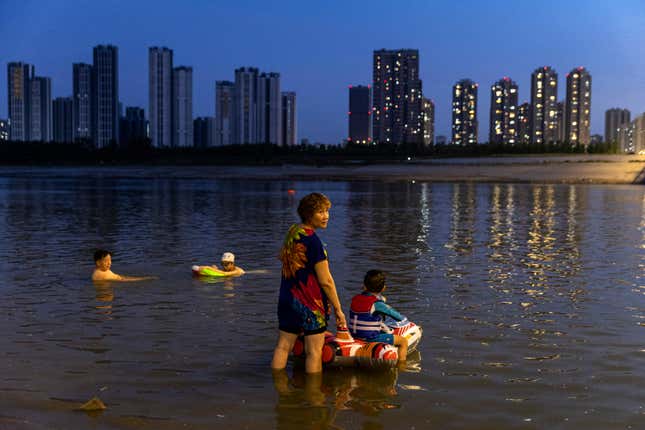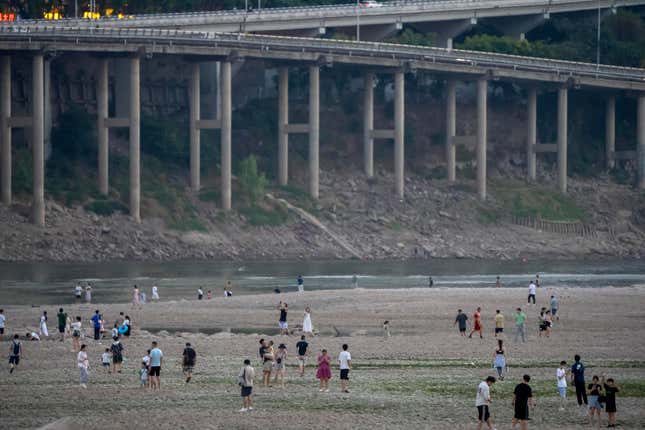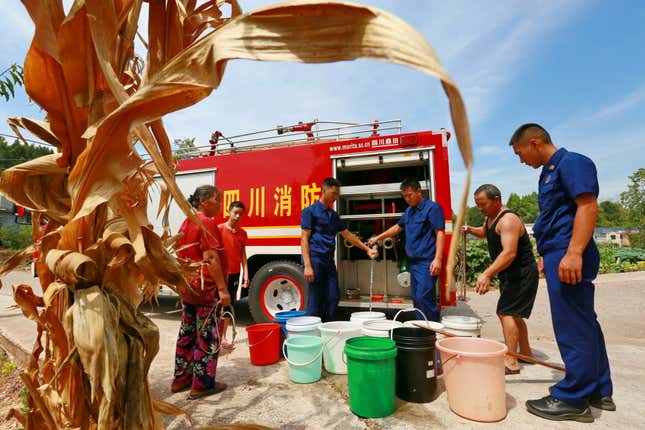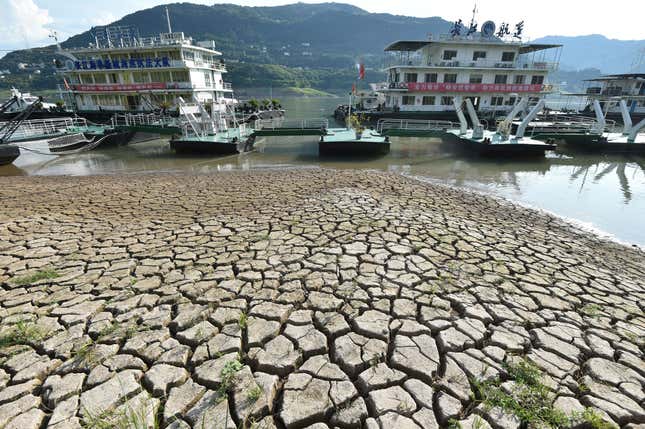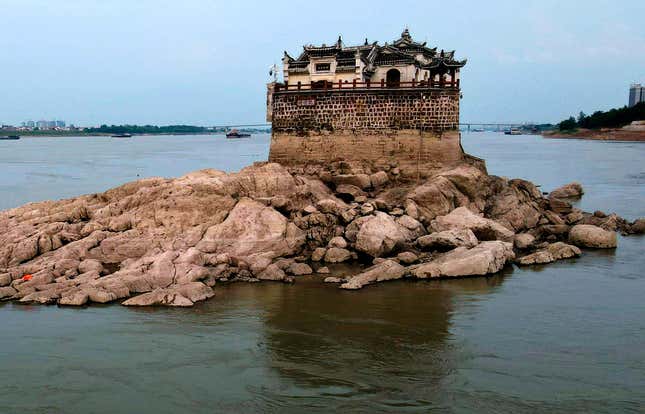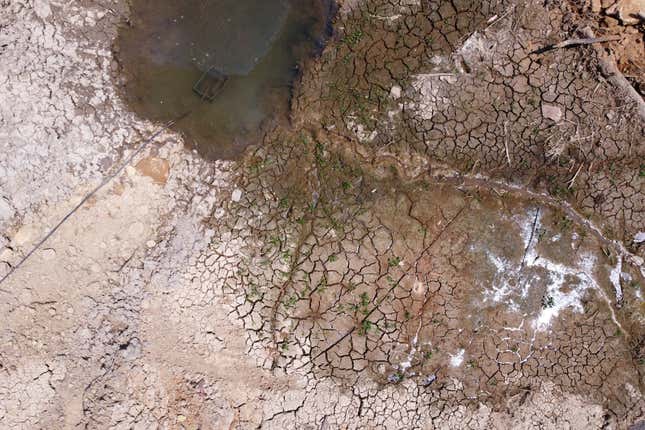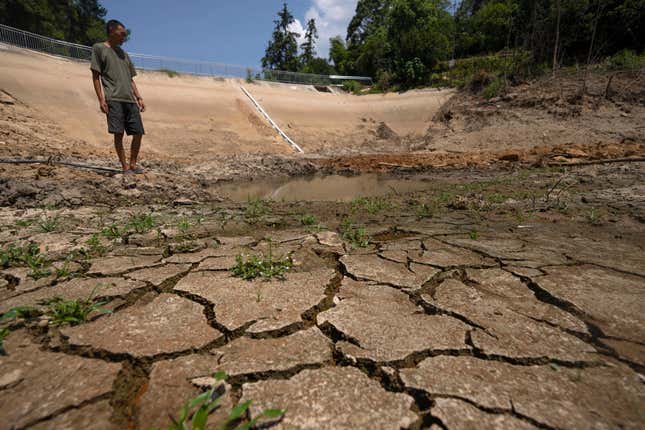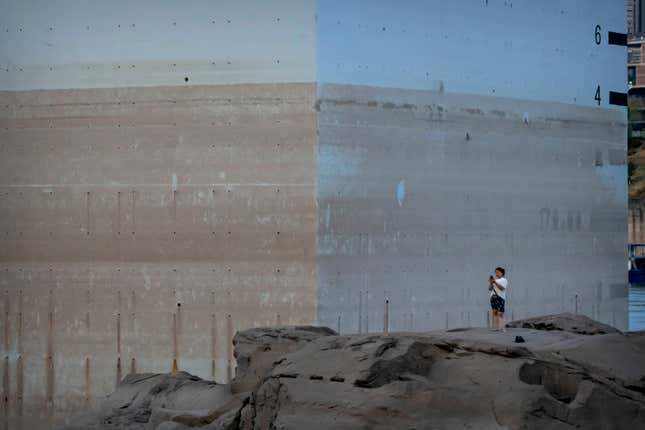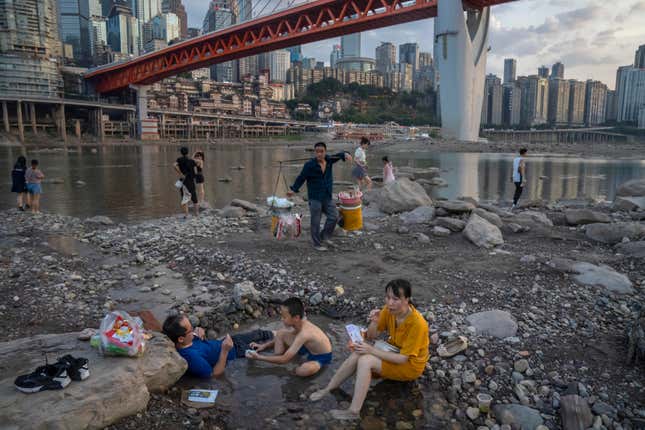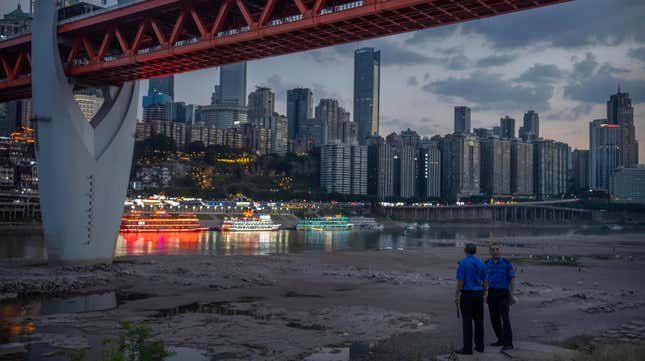
Conditions in China are devastatingly hot and dry—and they’re dragging on. Government officials say that the heat the country has been experiencing for weeks is the most intense heat wave China has seen since modern records began in the early 1960s. The heat wave, which has now lasted for 72 days, has beaten out an earlier record of a 62-day hot streak set in 2013.
“Heatwaves in China have definitely become more common and more intense as well as longer in duration because of human-induced climate change,” climatologist Friederike Otto told Climate Home News.
The effects of the drought and heat wave have been widespread, from crop loss to the shutdown of factories due to low hydropower. Here’s a rundown of what’s happening.
